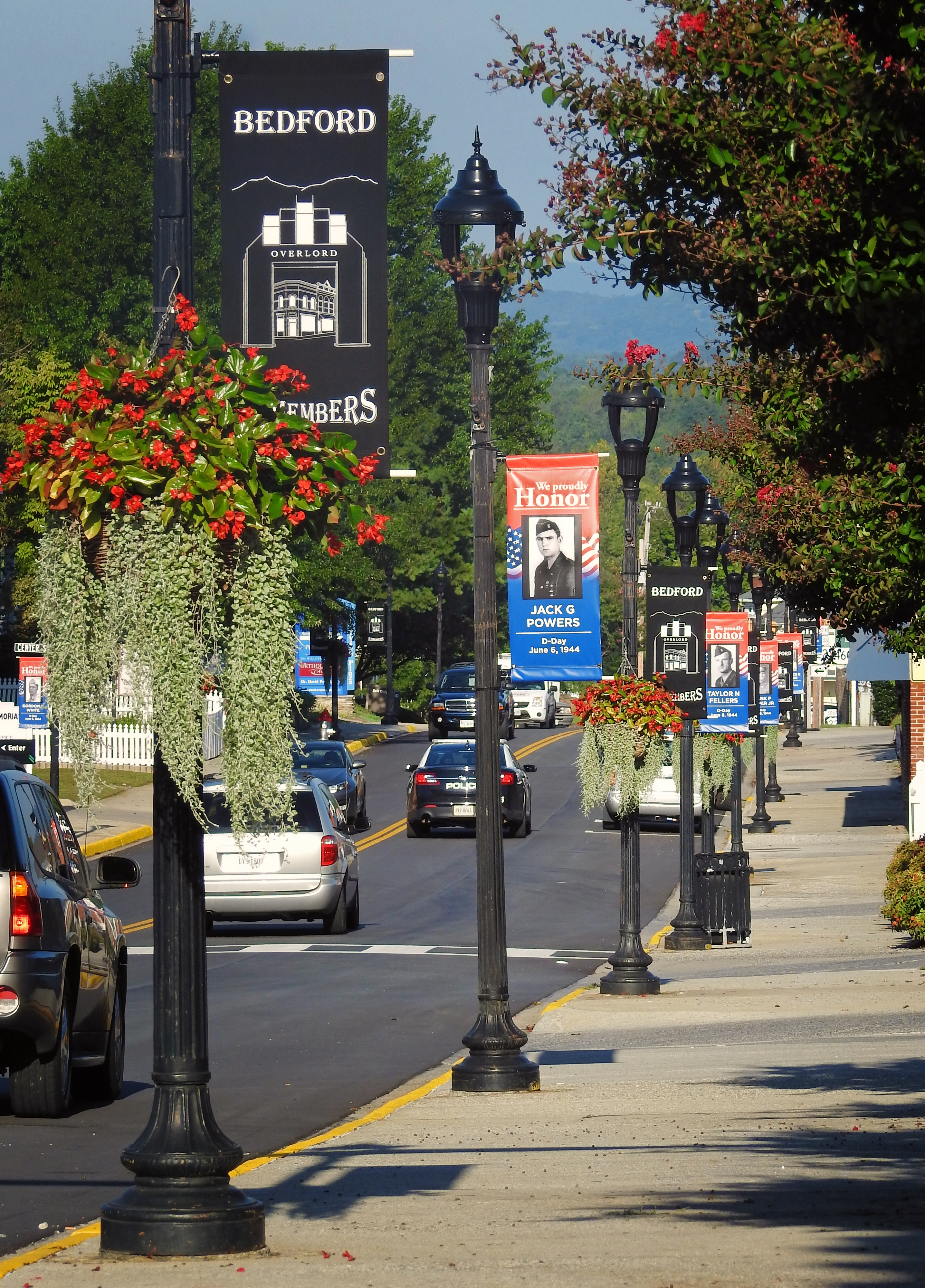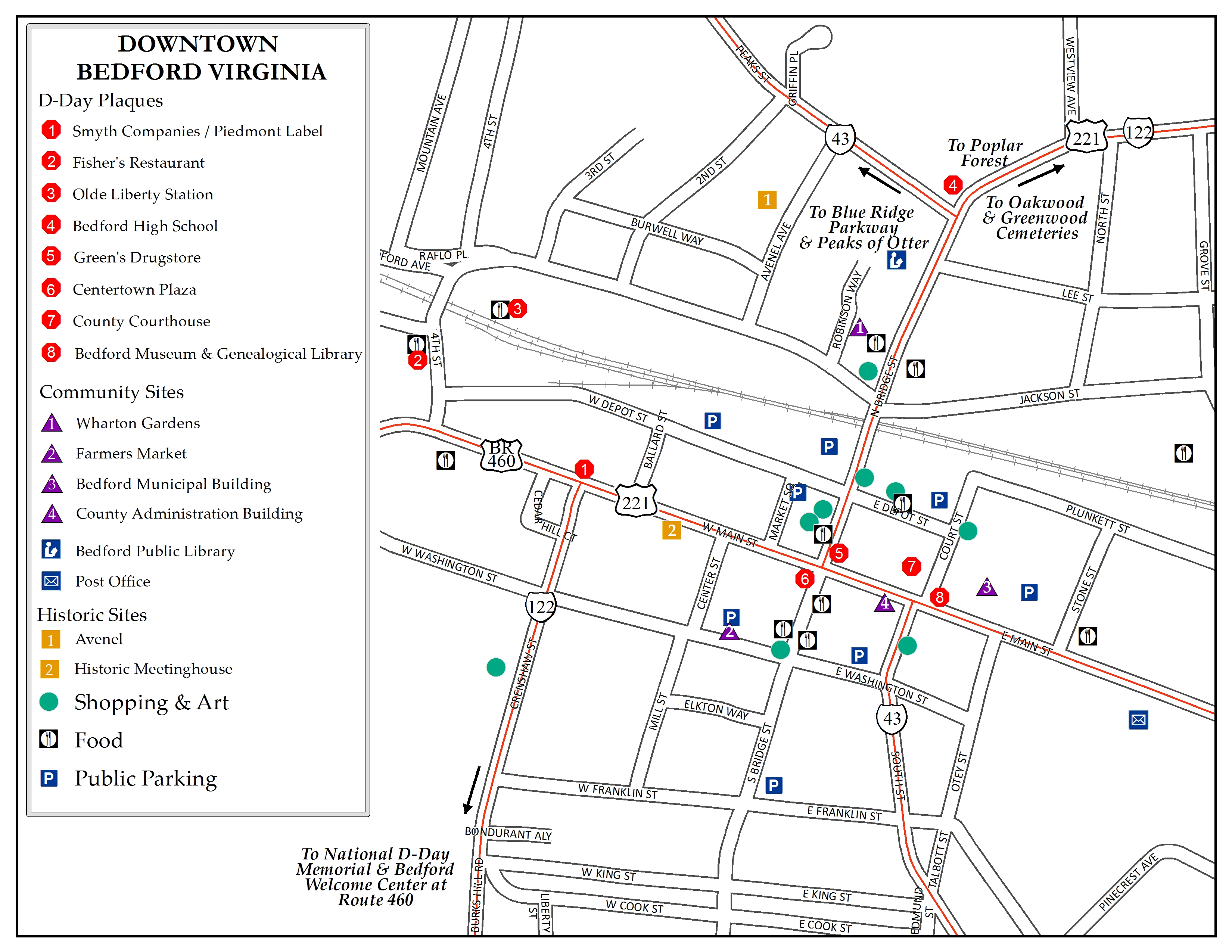Established as the town of Liberty in 1782, Bedford quickly became well known as the county seat and as a center for the production and distribution of tobacco, corn, wool, textiles and eventually synthetic rubber products. The community of Bedford is located at the foot of the Blue Ridge Mountains with the picturesque Peaks of Otter as a backdrop.
Many of Bedford’s structures were built in the 1880s and 1890s, replacing the wooden buildings lost in a fire in 1884. The primary architecture reflects the Victorian era’s Italianate style with ornate window details and a wide variety of arches and decorative cornices. In contrast to the elaborate Victorian buildings, Bedford also boasts a number of classical Revival buildings, elegant in the simplicity of their design.
It is in this setting that the famed “Bedford Boys” would spend their youth. Most joined up with the Virginia National Guard – Company A of the 116th Infantry Regiment of the 29th Division. The primary incentive for many was the extra dollar per day and the handsome new uniforms that many of the men felt would attract the ladies. Few of them believed they would be mobilized for war and embroiled in the largest invasion in history.
Trace their footsteps through what would become the most important event of the 20th century on this free walking tour.
Purchase Memorial tickets online to begin your tour at the National D-Day Memorial, where you will learn the history of the Normandy invasion and the price one community paid for freedom.
Bedford Boys Homefront Tour brochures are available at the Memorial and Bedford Area Welcome Center at 816 Burks Hill Road, Bedford, VA.





